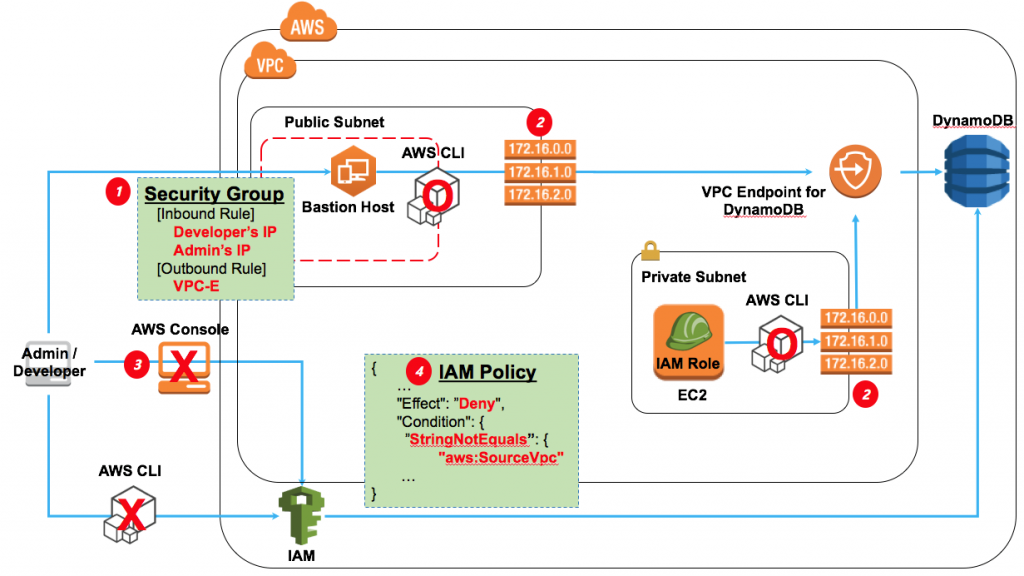AWS Database Blog
Tag: DynamoDB
How to Stream Data from Amazon DynamoDB to Amazon Aurora using AWS Lambda and Amazon Data Firehose
February 9, 2024: Amazon Kinesis Data Firehose has been renamed to Amazon Data Firehose. Read the AWS What’s New post to learn more. We find that customers running AWS workloads often use both Amazon DynamoDB and Amazon Aurora. Amazon DynamoDB is a fast and flexible NoSQL database service for all applications that need consistent, single-digit millisecond latency […]
How to Configure a Private Network Environment for Amazon DynamoDB Using VPC Endpoints
Gisung Lim is a security solutions architect at Amazon Web Services Korea and Sangpill Kim is an enterprise solutions architect at Amazon Web Services Korea. This blog post explains how to enhance the privacy and security of data transfers between Amazon DynamoDB and your corporate network using the new Amazon VPC Endpoints for DynamoDB (currently in public preview). With […]
Preventing Accidental Table Deletion in DynamoDB
Edin Zulich, AWS NoSQL solutions architect It’s easy to delete a table in Amazon DynamoDB, and that means that it’s easy to delete one by accident, too. Fortunately, you can minimize the risk of accidentally deleting a table using AWS Identity and Access Management (IAM), which provides authentication and access control for DynamoDB. As a […]
Introducing Cost Allocation Tags for Amazon DynamoDB
Nitin Sagar is a senior product manager for DynamoDB. You can now add tags to your Amazon DynamoDB tables. Tags are simple, user-customizable key and value pairs that are supported by many AWS services. Tagging for DynamoDB provides fine-grained visibility into your DynamoDB bill. You can assign tags to your tables and see cost breakouts […]
Should Your DynamoDB Table Be Normalized or Denormalized?
In the context of databases, the term normalization refers to the process of organizing the columns (attributes) and tables (relations) of a relational database to minimize data redundancy. The general recommendation for relational databases is to use a normalized schema. This blog post will cover the right approach for designing tables in Amazon DynamoDB. Understanding the […]




